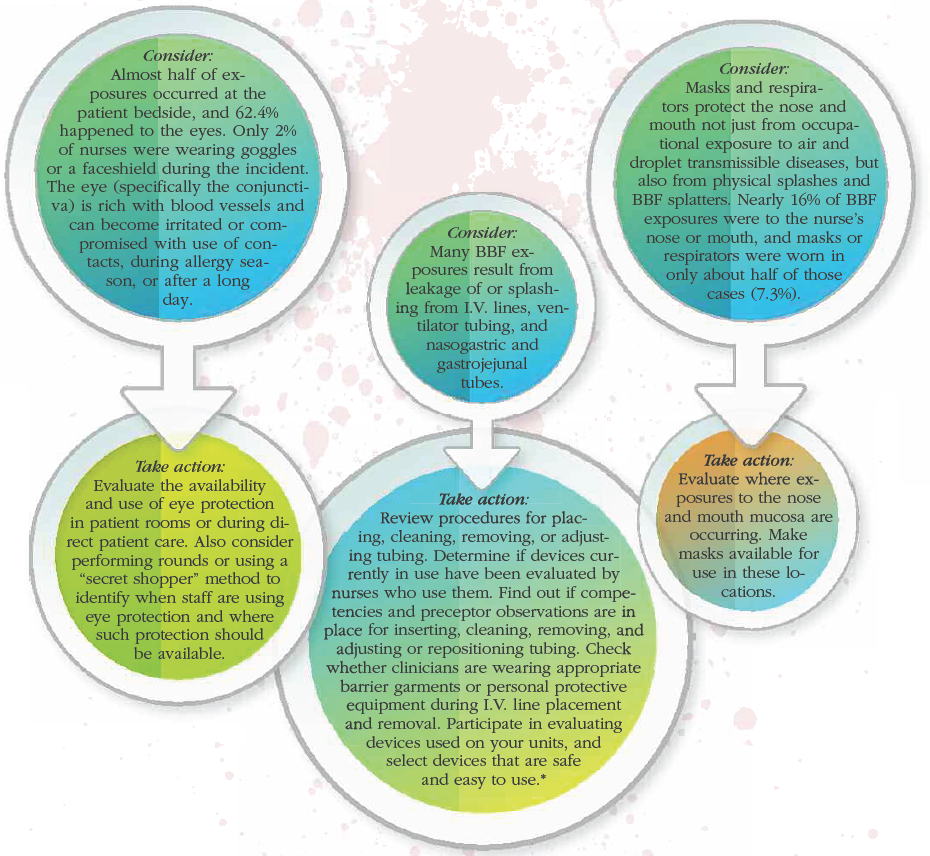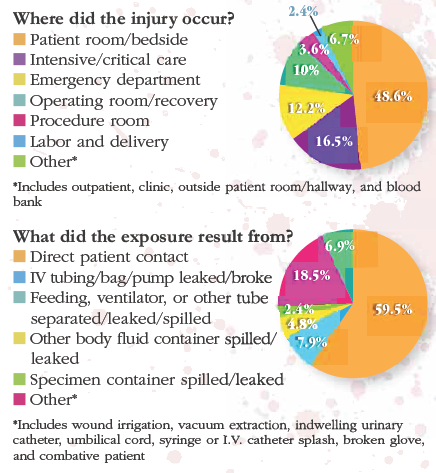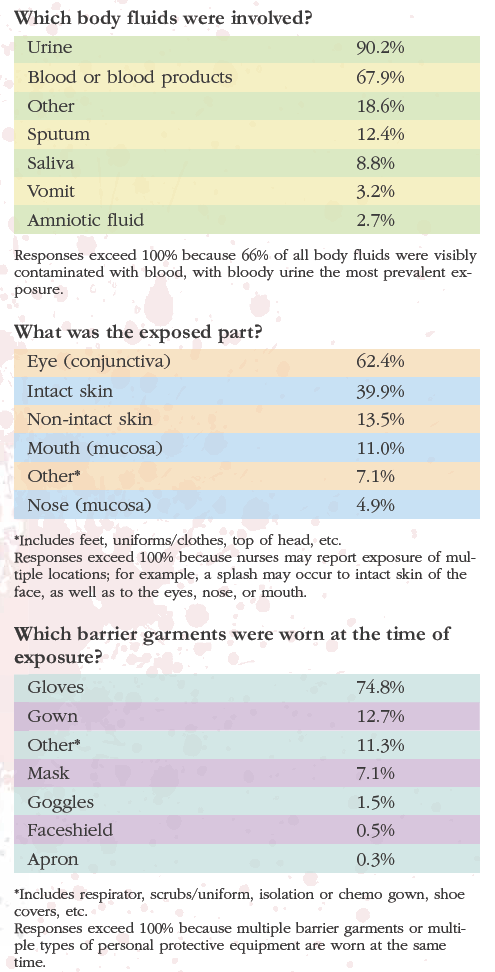Editor’s note: This article is the second in a three-part series brought to you in partnership with the International Safety Center. In September, we published “Preventing needlestick and sharps injuries,” available here. Watch for the final article in the series—use of personal protective equipment—in a future issue.
The Exposure Prevention Information Network (EPINet®) is a tool for surveying and measuring occupational exposures to blood and body fluids (BBF). EPINet helps identify where infectious exposures are occurring in U.S. hospitals and allows you to compare them to what’s happening in your facility. The International Safety Center distributes EPINet for free to hospitals and other healthcare facilities to measure such exposures, which can cause illness and infection in the working population.
Nurse exposures from splashes and splatters
Nearly half (49%) of all BBF exposures occurring across all U.S. hospitals happen to nurses. The statistics in the pie charts below come from the most recent EPINet data (the 5-year period from 2009 to 2013).
Protecting nurses
Now that you know the facts, you can take steps to help eliminate splashes and splatters and encourage your employer to take action. In May 2015, the National Institute for Occupational Safety and Health (partnering with the Occupational Safety and Health Administration [OSHA] and The Joint Commission) published the Hospital Respiratory Protection Program Toolkit, which you and program administrators may find useful. To access the Hospital Respiratory Protection Program Toolkit, visit cdc.gov/niosh/docs/2015-117/pdfs/2015-117.pdf.

Innovation
Nurses are creative, resourceful innovators. You can direct and positively affect your own life and the lives of your patients and colleagues.
The authors work at the International Safety Center (InternationalSafety Center.org). Amber Hogan Mitchell is president and executive director. Ginger B. Parker is vice president and chief information officer.
References
Centers for Disease Control and Prevention. HIV in the United States: At a glance. Page last updated: July 1, 2015. www.cdc.gov/hiv/statistics/basics/ataglance.html
Centers for Disease Control and Prevention. New hope for stopping HIV. CDC Vital Signs; December 2011. www.cdc.gov/vitalsigns/HIVtesting/index.html
Scott KC, Taylor EM, Mamo B, et al.; Centers for Disease Control and Prevention. Hepatitis B screening and prevalence among resettled refugees—United States, 2006-2011. MMWR Morb Mortal Wkly Rep. 2015;64(21):570-3.
*OSHA requires nurses’ involvement in safety device evaluation to prevent not just needlesticks and sharps injuries but also splashes and splatters like those identified here.




















